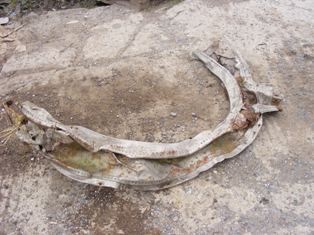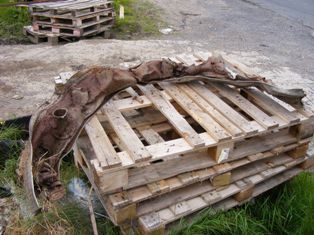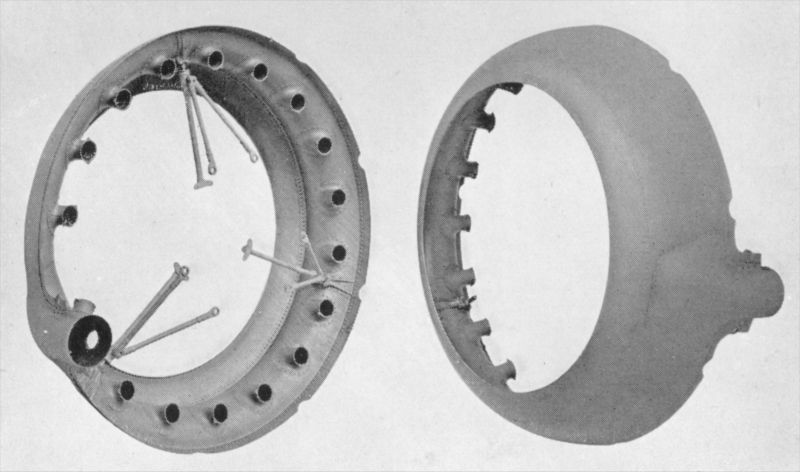Miles Martinet HP371, Monaghan, December 1943
December 28th, 1943 would close out a bad month in the history of aircraft crashes in Ireland. Already, that month eight American airmen had died in crashes in Sligo and Kerry, five men of the Royal Air Force in Donegal and six airmen of the Polish Air Force in Kerry. This grisly tally would be finished off with a tragic crash in County Monaghan in the days after Christmas.
On that day, an aircraft crashed 3 1/2 miles west of Scotstown in County Monaghan in the townland in Knockatallon. The Irish Army report created by the Army's Intelligence Branch, G2, contains a number of officer's reports and memos on the crash. These various reports record the time of the crash as 10:00 or 11:00 in the morning. None of them mention anything of the weather conditions at the time. The following was the conclusion reached by the Irish Army on the reason for the crash:
"According to local reports, as heard from Gardai in Scotstown, the Aircraft had been flying an approx. Southerly course, at very low altitude, for about five miles, before it reached the scene of crash. Just before it crashed it turned and was then moving in approx. Northerly direction. From this description it is probable that the aircraft stalled in a turn at very low altitude".
A memo kept by Irish forces on the day of the crash records that reports from the area of the crash were received by the Irish Air Corps in Baldonnel aerodrome outside Dublin at about 14:00 on the 28th December. A hand written note from 18:30 hrs appears to read "Mil Attache office informed me that there was a MARTINET missing that this was probably it". Early on the morning of the 29th, Lt. Teague of the Irish Air Corps left to travel to Knockatallon from Baldonnel. His initial reports were that the aircraft was completely burnt out and had been of wooden construction. The remains of a target towing winch were identified in the wreckage. Later that day another hand written report apparently from the G2 Branch states "Major Delamere states that a/c is definitely a Martinet target towing aircraft and is beyond doubt the aircraft posted as missing whilst on a Communications flight from Belfast to St Angelo (near Enniskillen)". It records that the local Gardai (Police) in Scotstown were spoken to and they were asked to "inform Cdt. Power that the deceased pilot's name was Flt Sgt Mac Millan, (which I ascertained from W Commdr Begg through Major Whelan) and to facilitate Cdt. Power in producing the registrars certificate of death." One can see in this the level of co-operation between the Irish Defence forces and the British authorities in these cases. Wing Commander Malcolm Glassford Begg of the Royal Air Force was the British Air Attache in Dublin.
The Irish military personnel at the scene were drawn from the 12th Cyclist Squadron. These men provided a guard for the crash scene and participated in the removal of F/Sgt McMillan's remains. Commandant J Power, the G2 officer of Western Command over saw the final arrangements for F/Sgt McMillan. The Irish Army handed over his remains on the Clones - Newtownbutler border post at 9:30 on the evening of December 29th. There is no clear indication when the army completed their operation in Knockatallon in the days following the crash. Due to the post crash fire and the wooden construction of the aircraft, only the large engine and other heavy parts were removed from the scene. The last available reports indicate that what could be removed would be transported to Cavan Military barracks for disposal. As is clear from visiting the area in 2011, not all metal parts were removed by the Army!
The pilot of the aircraft was Flight Sergeant (F/Sgt) John Reid
McMillan 986831, a Royal Air Force Volunteer Reserve (RAFVR)
pilot from Edinburgh. John was 32 years of age and married to
Rebecca with one son, Thomas. Thomas would have only
turned 6 years old a few days before his fathers death. A
letter his mother wrote in early 1943 mentioned how young Thomas
had danced for joy when he heard his daddy had returned from
America.
John McMillan's remains were not returned to Scotland for
burial but lie at peace in Irvinestown Church of Ireland
churchyard in County Fermanagh, Northern Ireland, just a few
miles from where he died. His remains were taken from the
aircraft during the 29th of December 1943, coffined and then
handed over at Newtownbutler border post at 21:30 that
night. His Commonwealth War Graves Commission headstone
bears the inscription: RESTING WHERE NO SHADOWS FALL.
Documents released by the CWGC in 2017 showed that his RAF unit
was notified as 131 O.T.U.
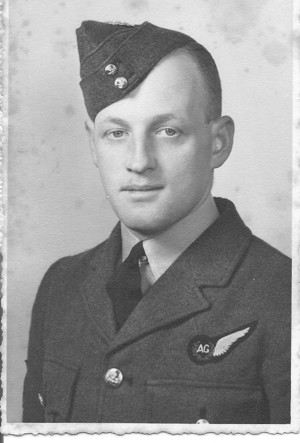
In 2011, John's nephew's wife, Doreen was kind enough to pass on some of John McMillan's family history as well as photos of John. John was born to Thomas and Agnes McMillan in 1911. John's father was among those killed on 25th September 1915 at the Battle of Loos serving with the Highland Light Infantry. John's mother Agnes married again after the war and suffered the loss not only of her son John in 1943 in this crash, but in 1945, John's half-brother, James L Ferguson, with the Royal Armoured Corps died on active service in India.
Thanks to a kind McMillan family friend who replied to a letter published in a Edinburgh newspaper in 2008, Doreen was able to trace Thomas McMillan to his home in Melbourne Australia. Thomas's family were able to supply a copy of F/Sgt J R McMillan's RAFVR service record. From this file it was possible to trace John's wartime service. He enlisted in the Air Force in April 1940. At the time of enlistment his occupation was given as 'Motor Driver'. His initial period of service up until about February 1941 suggests he was employed as a Petrol Bowser Driver. In the spring of 1941 he was re-mustered and declared fit for aircrew duties. It was August/September 1941 before he joined number 6 Initial Training Wing. During December 1941 through to January 1942 he was transferred first to Canada and on to his flying training. His flying training took place under what was called the All Through Training Scheme (ATTS). This scheme meant that John undertook all his flight training from basic to advanced single engine training at the Darr Flight School or Number 6 British Flying Training School (BFTS) located at Ponca City, Oklahoma. This school was staffed by RAF officers but the aircraft and training personnel were American military and civilians.The photos below show John with three close service friends he trained with in 6 BFTS during a visit to relatives of his in Denver, Colorado.
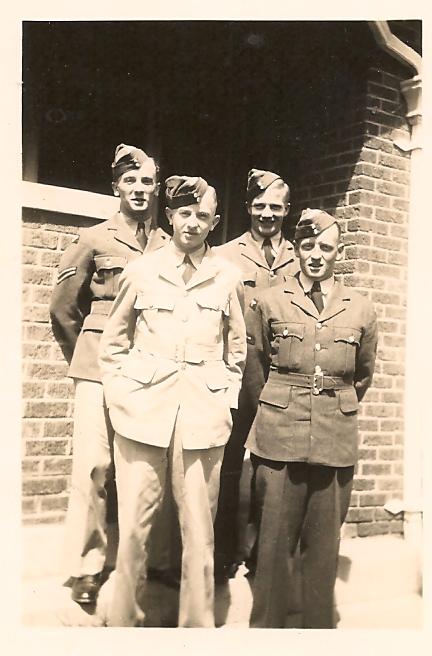
Rear, Left to right: Corp Stanley John Eaton 570993, later Wing
Commander S J Eaton 49804 and David Little 657483, 21 Peel St,
Partick, Glasgow;
Front: W/O Donald William Joliffe, 1238969, failed to return
from a photo recon mission with 16 Squadron over Holland on 1st
Oct 1944. and John R McMillan
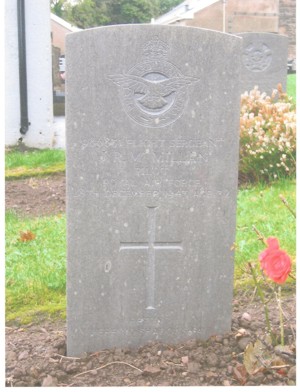
Upon completion of his flight training, John returned to the UK
in November 1942 where he was posted to 6 (Pilots) Advanced
Flying Unit in Oxfordshire in February 1943. This would have
seen him learn to fly multi-engined aircraft, including the
Airspeed Oxford trainer and it would have allowed him to
familiarize with flying in the decidedly more murky skies of
Northern Europe. Two further postings with 3 School of General
Reconnaissance (SGR), posted in 11 April 1943, and 8
(Coastal) Operational Training Unit (OTU), on 22 Jun 1943 were
followed up with him being posted to 131 Operational Training
Unit in July 1943. The postings with 3 SGR and 8 (C) OTU
may have been related as the latter was formed from parts of the
former in May 1943.
131 OTU was based at Killadeas in County Fermanagh, Northern Ireland. He was promoted to Flight Sergeant during his time at Killadeas and his service file records him to be a pilot of very good character.
Research among British aircraft records shows that on December
28th, 1943, a Miles Martinet target towing aircraft from 131
(Coastal) Operational Training Unit crashed in Monaghan. This
training unit was based at Killadeas flying boat base and the
nearby RAF St Angelo airfield, in Fermanagh, Northern
Ireland. It was equipped with the Catalina flying boat
based on Lough Erne, while land based aircraft like the Martinet
would have operated from the runways at St Angelo. The
Royal Air Force Museum in Hendon holds an Air Ministry Form 1180
for this aircraft, Martinet serial number HP371. This report is
shown in the following images:
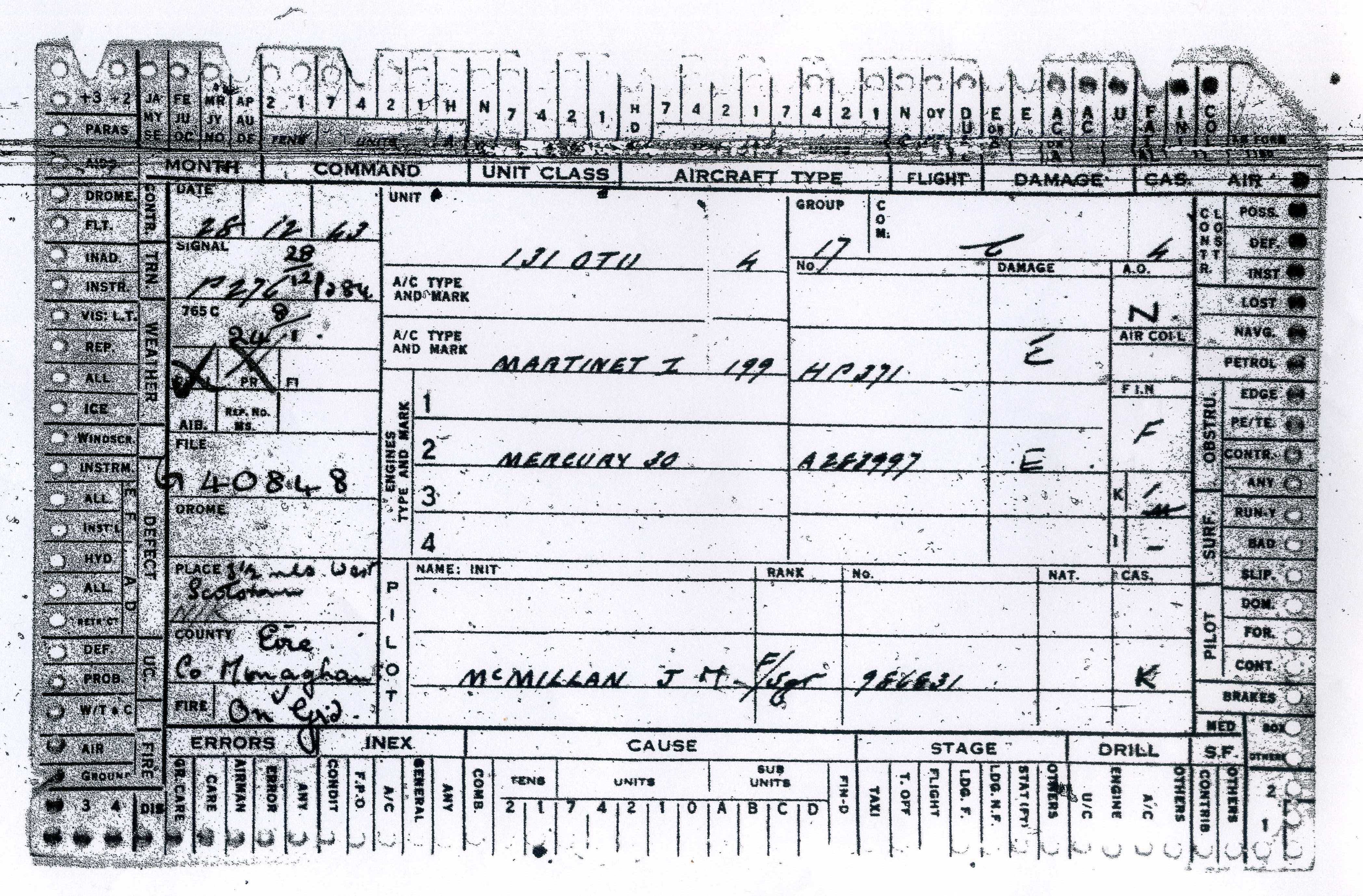
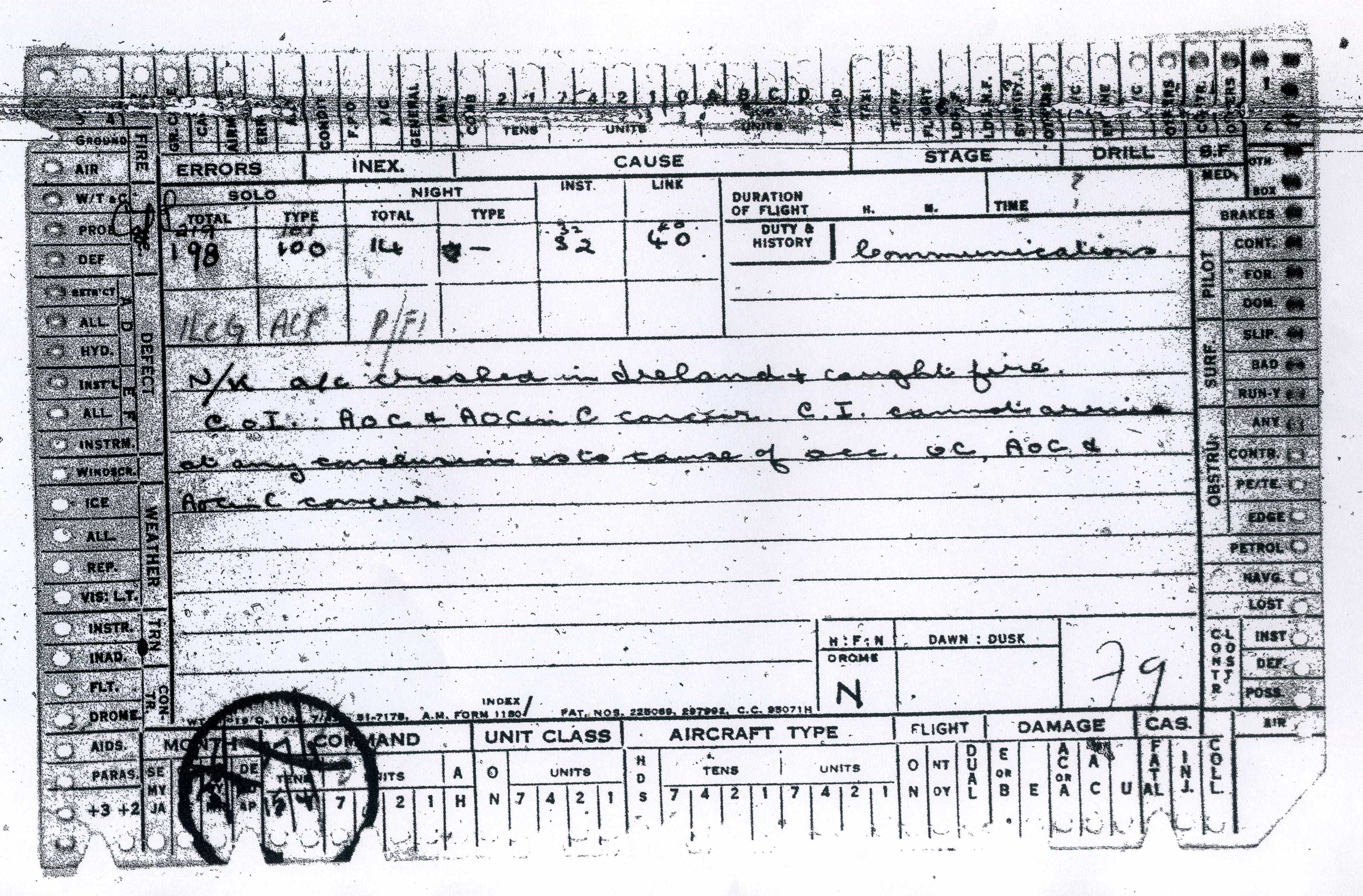
The hand written text on the back of the card reads as follows:
N/K a/c crashed in Ireland + caught
fire.
C.o.I. AOC & AOCinC concur. C.I. cannot arrive
at any conclusion as to cause of acc. OC, AOC &
AOCinC concur.
These letters stand for:
N/K - I understand that this simply means, Not Known, in that
the overall reason for the loss was not known.
C.o.I / C.I - Court of Enquiry
A.O.C. - Air Officer Commanding
AOCinC - Air Officer Commanding in Chief
OC - Officer Commanding.
acc. is short hand for accident.
At the top of that sheet it records that F/Sgt McMillan had a
total solo flying time of 198 hours, with 100 of them on the
Martinet aircraft type. He also had completed 14 hours of night
flying. There are other numbers entered above those figures and
I understand these are updated flying hours as a result of the
Court of Inquiry. The card also records the purpose of the
flight to have been 'communications' but there is no indication
as to John's intended destination. RAF St Angelo airfield is the
modern day Enniskillen airport. The airfield at St Angelo is
little more than 21 miles from Knockatallon.
Local man Donal McEnroe in 2019 was kind enough to provide
copies of photos he took in 1981 after talking with Jim
Gallagher. Jim Gallagher's recollection at that time in
January 1981 was:
"Mr Gallagher said he was at home
about 9.45am on the cloudy morning of 29 Dec 1943 when he
heard an approaching aircraft which sounded as if it was in
serious trouble. Outside he saw a low flying Martinet
approaching, with its engine on fire. Pieces began
falling off - including the engine (see note below).
It then turned right and crashed in the bog. He showed
me pieces of what looked like engine cowling, still visible
"where they had fallen"
Note: The 1943/44 reports by the Irish Army imply that
the aircraft and engine crashed at the same location. The
spot at which it crashed was described in an 8th January 1944
letter from the Officer Commanding the Irish Air Corps to the
Department of Defence as:
"The principle damage to the lands,
which is a wet peat bog, was a hole 10 feet x 30 feet and 8
feet deep (at the deepest part). There will probably
be further damage in digging out the engine."
Donal's photos included the following:
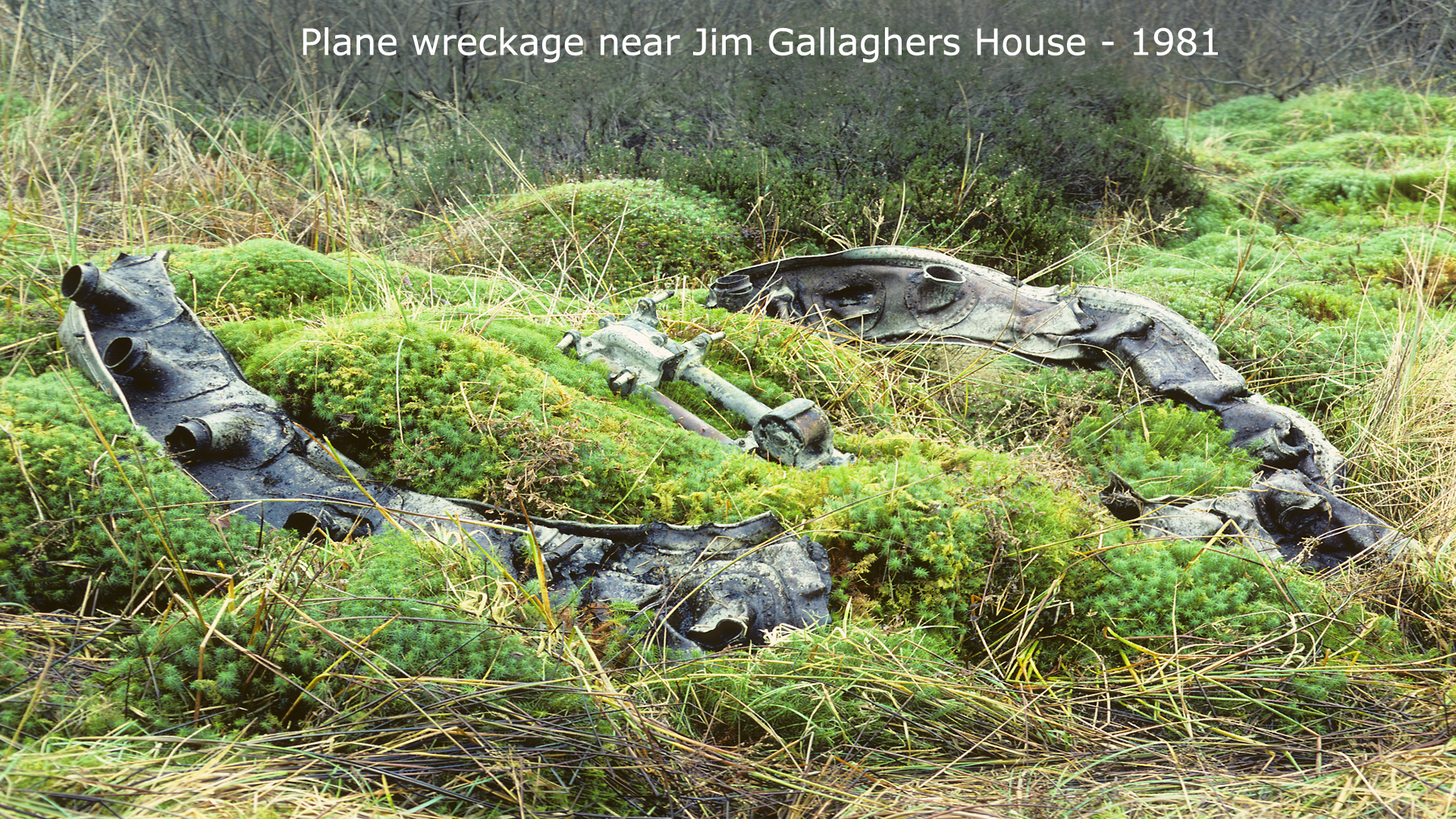
In the above photo, one can see more of the crushed engine cowl
ring from the aircraft, its not clear if this is the whole ring,
and includes the part found during the 2011 visit described
below
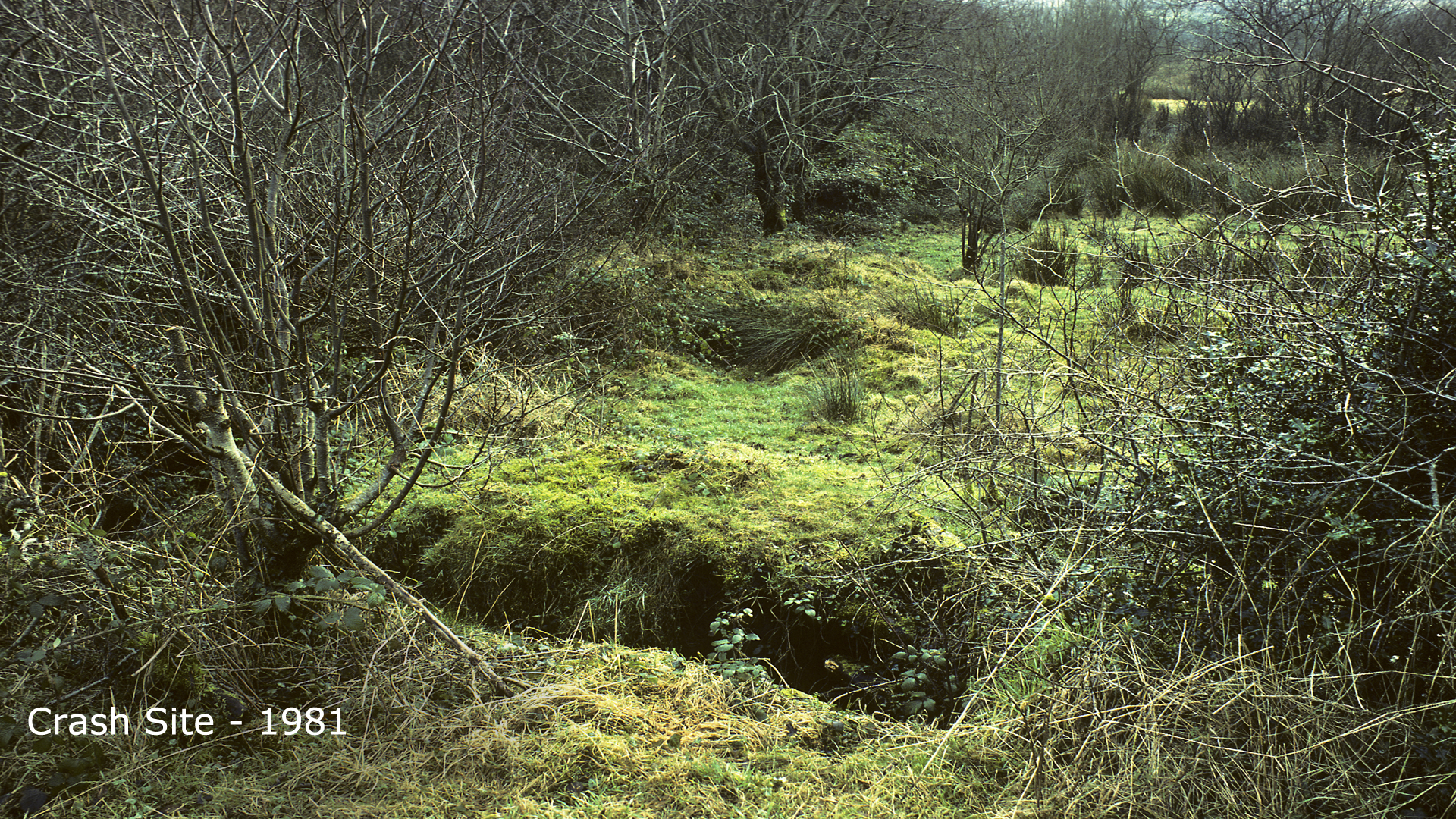

The map below from Microsoft Bing maps shows the Knockatallon
area in relation to Lough Erne and Enniskillen.
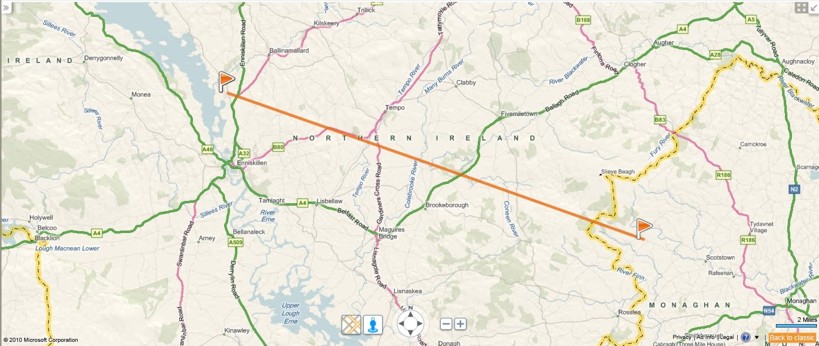
The location of St Angelo
(Enniskillen Airport) relative to Knockatallon. (Click to
enlarge)
In May 2011, I made a very interesting trip up to County Monaghan and the townland of Knockatallon where John's aircraft crashed.
The first port of call was the Sliabh Beagh Hotel in Knockatallon village and the owner there John Moyna was very interested in the crash and was delighted to finally see a picture of John McMillan. His familiarity with John's name stemmed from the fact that a local man named Jimmy Gallagher used to write a small story about the crash every Christmas in the local newspaper, the Northern Standard. It is unclear yet if Jimmy was an adult at the time of the crash or if he was a youth, but his home sat on a small rise above where the crash occurred. Jimmy passed away in the 1980's but he left a legacy of John's memory at least with the older locals. Sadly almost all the older members of the community had passed away, one old lady died in the winter of 2010 and she might have recalled some details. John Moyna from the hotel did mention that almost every house in the village used to have a piece of the aircraft, which is not unlike other communities where crashes occurred.
John explained where to find the crash location itself, which was back along the way I had come, just at the bottom of a small bump in the road. I drove back to the location of the crash and after asking a few people on the road I was pointed up to a particular house. As I parked up I seen a man come out of the house, and introducing myself, I found I was speaking to Mr. Danny McAloon. I explained that I was looking for information about the crash and he turned on his heal saying, 'I have a bit of that airplane'. And low and behold, from under a pallet in front of his house he pulled a large semi-circle of metal. Looking over this broken metal assembly I guessed that this was the nose exhaust collector ring from the front of the engine cowling. Photos of the assembly are shown below.
It was said that the aircraft had taken a chimney off the house
Danny lives in now, then owned by the Colturne family, and had
crashed into a corner of a field just below at the side of the
road. He found the piece of the aircraft outside the abandoned
home of Jimmy Gallagher. Danny pointed out that the area at the
time of the crash would have been largely devoid of trees and
would have appeared quite open looking, the road running through
it is quite straight although it is bumpy. Also, at the time
there was no electricity or telephone poles on the road side.
The area of the crash is known locally as The Long Hollow. He
understood from the old people that the weather was fine on the
day of the crash. After a while he mentioned that local people
were affected by the crash, knowing that a stranger had met his
met his death in their community at the side of a road.
The general layout of the crash is shown below.
The information from Donal McEnroe gathered from talking with
Jim Gallagher and maybe others in the early 1980's would
however, place the crash location on the far side of the house,
closer to the cross roads.
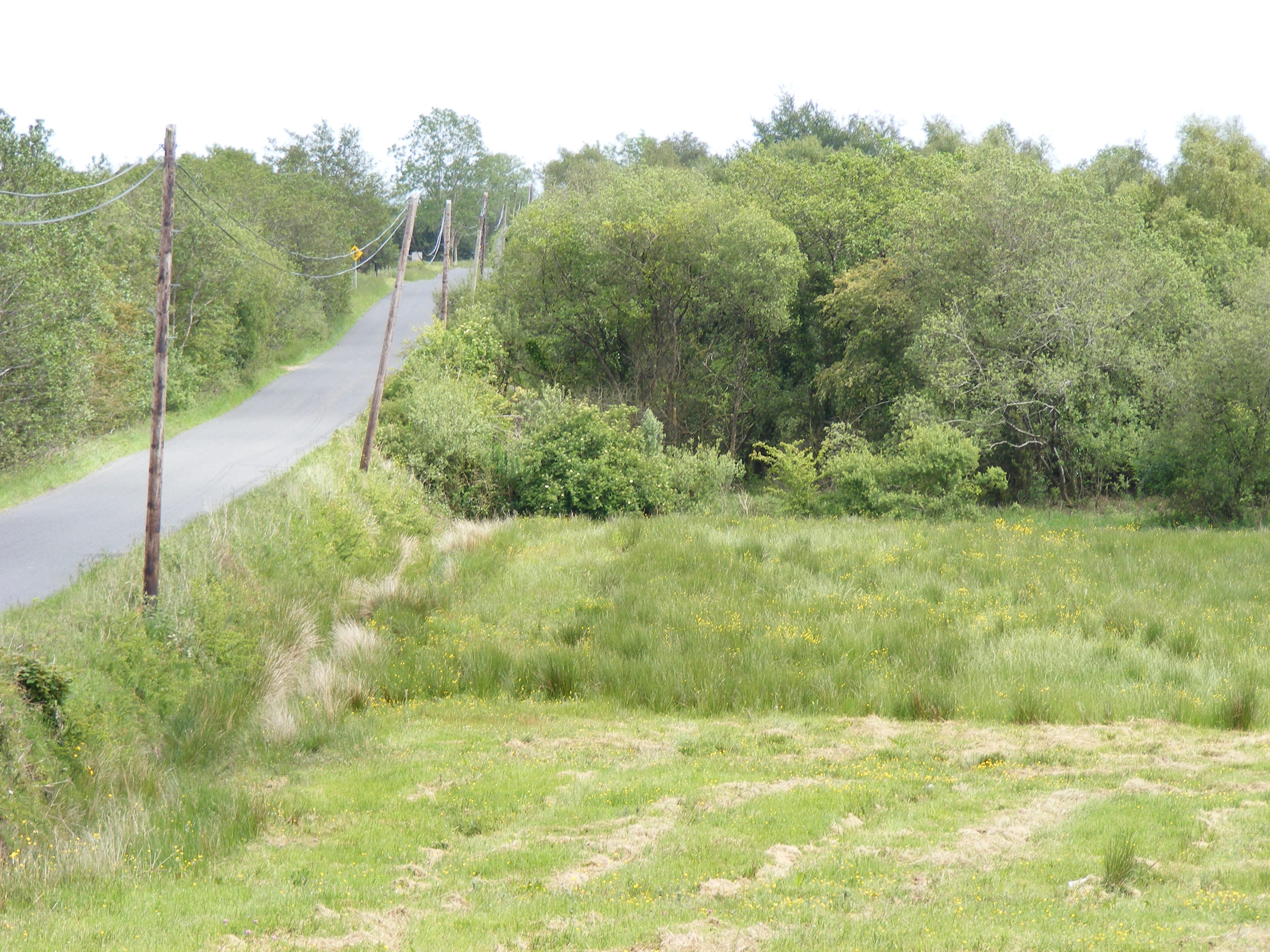
The above photo would be looking away from the cross roads
towards Scotstown, with the crash being said to have taken place
in the bushes.
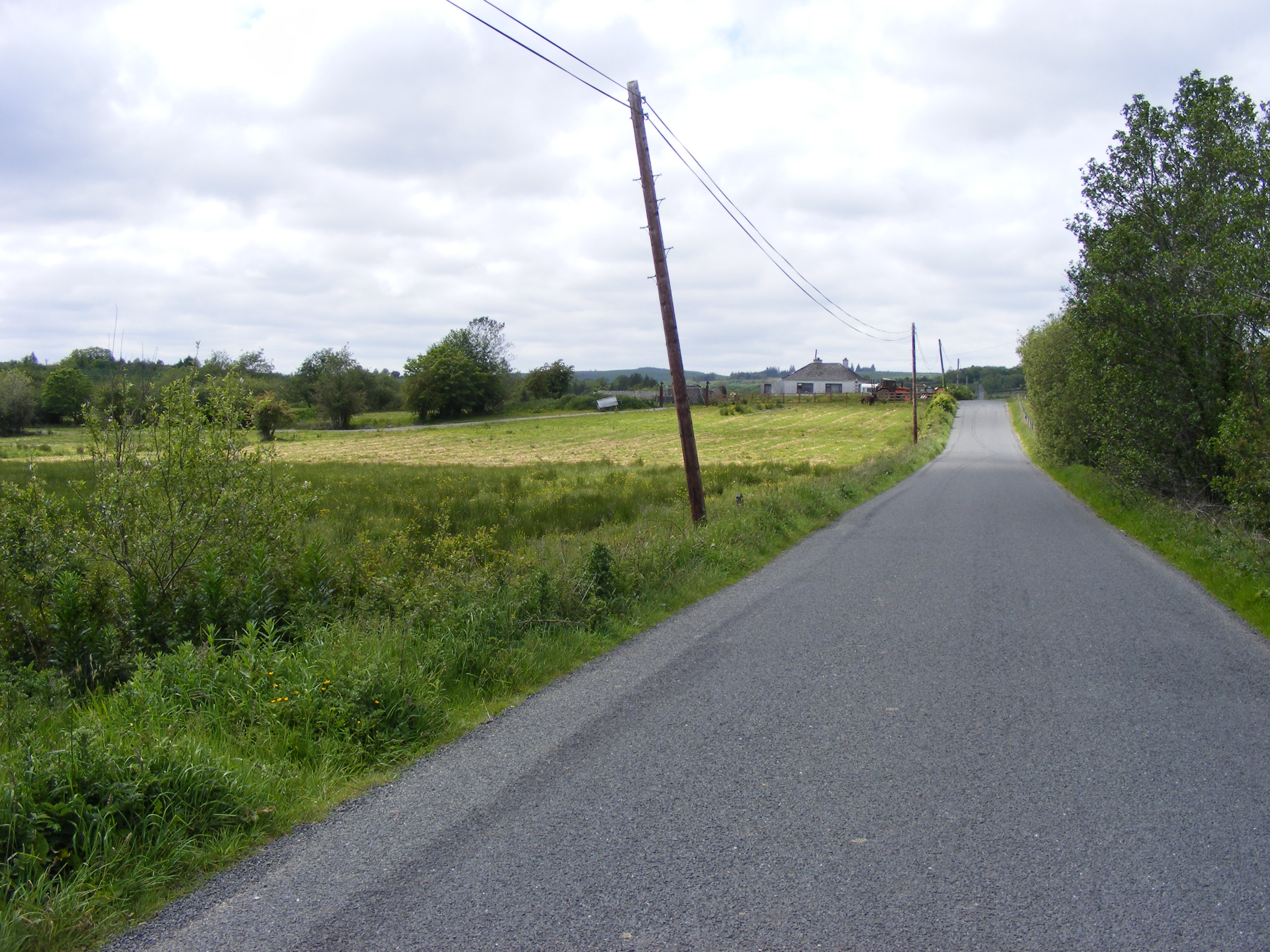
The above photo, is taken from the road looking back towards
the cross roads from the point said to be the crash
location. Other sources however put the crash site on the
far side of the house visible in the photo. The 1981 photo
of engine cowl wreckage is reported to be from the area to the
right of this photo.
An exhibition opened in June 2018 in Monaghan County Museum and
information about it can be found here on the Museum website by
clicking on the link below. It features an information
aboard about F/Sgt McMillan.
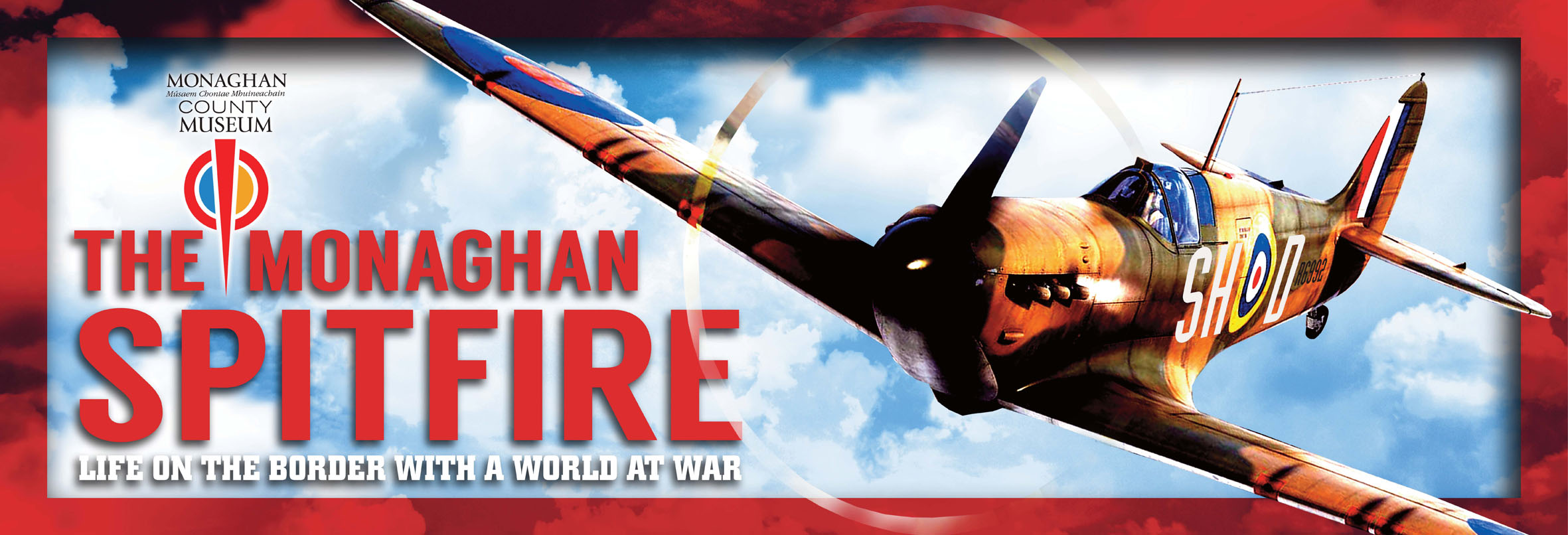
Also, on Wednesday 5th, 2018, Marie McKenna, a school teacher
from Scotstown, gave a talk in Ballinode Church Hall on the
subject of "The Plane Crash at Knockatallon". A report on
the talk is here on the Tydavnet
Historical Society website.
Compiled by Dennis Burke, 2019, with the kind assistance of
John McMillan's extended family and, Donal McEnroe, Mr D
McIlloone and the Knockatallon Community. Information
sourced via Irish Army Archives, RAF Museum Hendon,
Ancestry.com.

